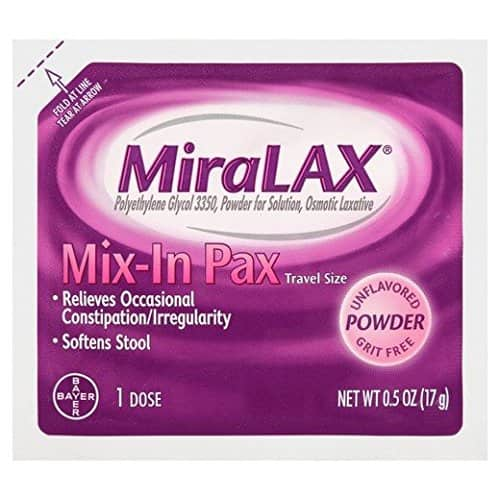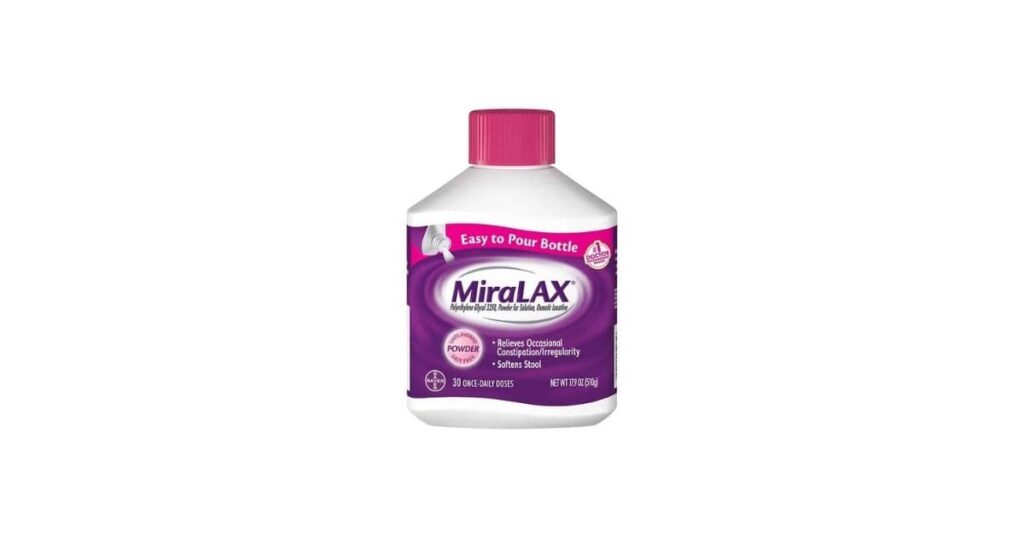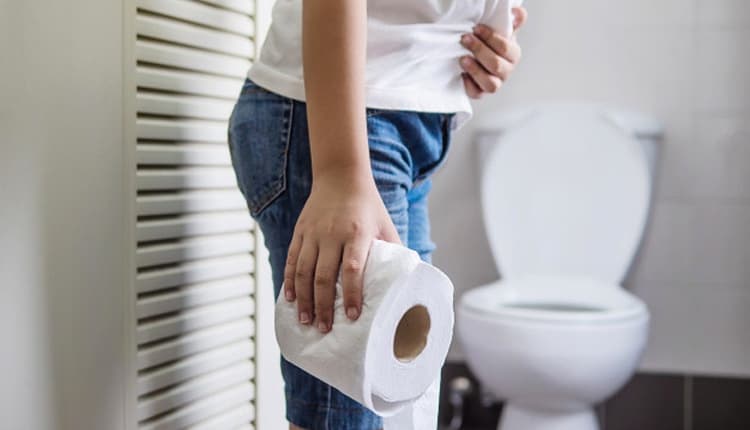Miralax Dosage In Teaspoons: Miralax Powder Dosage
Chronic constipation can sometimes become a very annoying disease.
If you have problems with your intestines, getting examined by a doctor will help you understand what is causing your illness.
Please note that you can use Miralax laxative with the advice of the doctor (This applies to all other drugs, not just this drug).
Miralax (Polyethylene glycol 3350) is an anti-constipation laxative used to soften and relax the intestines by combining with water in the body.
Miralax is an over-the-counter (or prescription) medication often used to treat occasional constipation.
It increases the movement of the intestines and helps the formation of water in the stool to soften the stool.
This laxative is called an osmotic-type laxative.
If you are going to use this medicine because the doctor has told you, you should be careful, read the instructions for use in the package and make sure you follow the instructions in the leaflet.

What Will We Learn?
How To Use Miralax 17 Gr Oral Powder Pack?
The standard dose of laxative is once a day, but your doctor may prescribe you different doses of this medicine.
By reading the leaflet, you can easily understand the dose and amount of the medicine.
If your doctor has prescribed it, make sure you take the medicine exactly as he or she says.
If you are going to use it as a bulk bottle, use the cap provided to measure the correct dose.
Mix this powder with one glass (4-8 ounces/120-240 milliliters) of water, juice, soda or tea (until the powder is well dissolved).
Liquid thickeners can interact with this drug, creating a choking risk.
If you are using a liquid thickener, you should discuss this with your doctor.
Even if you start the drug, do not rush and do not use more than the recommended dose, as it may take 2 to 4 days to take effect.
You should not use this medicine for more than 2 weeks unless your doctor tells you otherwise.
If your condition does not improve after taking the medicine, if your constipation continues, if you have stomach pain or if you have diarrhea that does not stop, report this to your doctor without waiting.
Long-term use can cause addiction, chronic constipation, diarrhea, mineral imbalance, dehydration and other side effects.
If you are using polyethylene glycol and this treatment has not worked after 7 days, tell your doctor.
Miralax Dosage In Teaspoons
The teaspoon dose of Miralax (for 17 mg) is 3.5 teaspoons.
Drink once a day, mixed with 4 to 8 ounces of beverage (it is recommended to mix with room temperature water).
Your doctor may suggest you use this medicine twice a day, this is the maximum dose.
Make sure you do not exceed 2 doses per day.
Do not take this medicine in longer or shorter doses, more or less, as this will do you more harm than good.
In studies with Miralax and placebo, people with fewer than two bowel movements per week increased their bowel movements from 2.7 per week to 4.5 per week when using this drug.
In addition, in another study, Miralax was tried in people with chronic constipation and a 52% success was achieved.

What Are The Side Effects Of Miralax?
While using Miralax, the following side effects may occur, inform your doctor if you experience any side effects.
- Difficulty breathing
- Swelling of your face, lips, tongue or throat.
- rectal bleeding
- severe or bloody diarrhea
- stomach aches
- bloating, gas
- dizziness
- Sweating
The drug usually has few side effects that are not too severe, but be aware that you may be sensitive to the ingredients of this drug.
Side effects not listed in this list may occur.
The side effects listed above are serious and if these side effects are experienced, the drug should be stopped immediately and medical help should be sought. You can also report side effects to the FDA at 1-800-FDA-1088.
How Much Does Miralax Cost And Where To Buy It?
Miralax (for 17 g) laxative, which is good for constipation if used correctly, has a selling price of 7 dollars on Amazon.
The weight amount is 4.1 oz. You can buy it from this link.
If you want, you can also buy 45 doses with a 5 out of 5 stars rating on Amazon.
You can also read this article where we answer all your questions about constipation.
What Can We Do For Constipation At Home?

In order to be successful in the treatment, first of all, foods that cause constipation should be learned and they should be avoided.
It is important to increase the consumption of fruits such as pears, apricots and plums, which are good for constipation.
Whole grain bread should be consumed instead of white bread, and plenty of water should be drunk.
For constipation problems in babies, it is useful to regularly massage their abdomen with baby oil and to do various exercises.
You can feed pulpy fruit purees to babies who take additional food, and mix olive oil into their soups.
For those who wonder what is good for older children with constipation, it is recommended to consume whole grain breads as well as pulpy fruits and vegetables.
Drinking warm herbal teas by mixing honey and drinking the water of prunes and apricots by boiling can be counted among other constipation solutions.
Honey is dangerous for babies under the age of 1, as it can lead to fatal consequences.
Foods that are good for constipation include shelled apples, spinach, cabbage, figs, leeks, olive oil, grapes, broccoli, flaxseed and oatmeal.
Dried Plum
Sorbitol in prunes is a sugar alcohol structure substance.
This substance, which is not absorbed, may contribute to the increase of fluid secretion in the digestive tract by showing a laxative effect in some people.
Apple
The fiber in apples is in the form of pectin.
Pectin is fermented by bacteria in the intestines and converted into short-chain fatty acids.
Short-chain fatty acids may contribute to softening of the stool and shortening the transit time through the digestive tract by providing water passage into the intestinal lumen.
Pear
Pear, another fruit with high fiber content, has higher values compared to other fruits in terms of fructose and sorbitol ratio, apart from the benefits it provides with fiber.
Fructose, also known as fruit sugar, is poorly absorbed in some people and can contribute to regulating stool consistency by attracting water in the digestive tract.
Kiwi
These effects of kiwi fruit are not only due to the fiber in its content.
An enzyme called astinidain is thought to play a role in the positive contributions of kiwi in the digestive system.
FIG
With the consumption of 75 grams of fig fruit, it may be possible to meet approximately 1/3 of the daily fiber requirement.
The enzyme called ficain, found in the fig fruit, has similar properties to the enzyme in the kiwi.
Citrus
Fruits such as tangerines, oranges and grapefruit are among the fruits rich in fiber content.
These fruits, which contain pectin, a soluble fiber, can contribute to the control of constipation by contributing to the transit time of stool through the digestive tract.
In order to take full advantage of the fiber and vitamin C contained in these fruits, it is recommended to consume them while they are fresh.
Spinach and Other Leafy Greens
Green leafy vegetables are among the foods included in healthy nutrition programs because they are rich in various minerals and vitamins apart from their fiber content.
Examples of vitamins found in vegetables such as spinach, Brussels sprouts and broccoli are vitamin C, vitamin K and folate.
Green leafy vegetables can contribute to softening the consistency of stool and making it easier to pass through the digestive tract.
Engineer
Artichoke is a vegetable that can benefit the protection of intestinal health by showing a prebiotic effect.
The concept of prebiotic is used to describe the nutrients that can have a positive effect on the beneficial bacteria in the intestines.
The inulin ingredient in the artichoke vegetable can contribute to the health of the digestive system by feeding the beneficial bacteria along the digestive tract.
Legumes
Legumes such as beans, peas and lentils are both economically viable and fiber-rich foods. 1 cup of beans can meet approximately 80% of the daily fiber intake.
Chia Seed
Chia seeds have a high fiber density. With a fiber content of more than 10 grams in about 30 grams, chia seeds can help meet 40% of the daily fiber need.
Most of the structure of the fibers in the content of chia creates insoluble fiber form. If this form of fiber comes into contact with water, it can turn into a gel form and contribute to the softening of the stool and facilitating its movement through the digestive tract.
If you are wondering about the benefits of vaginal steam, you can check out this article.
